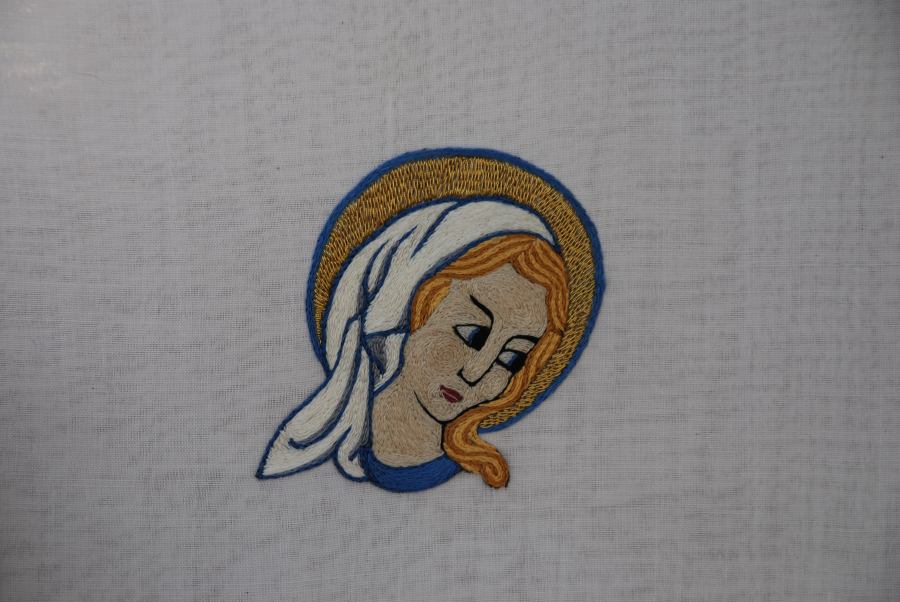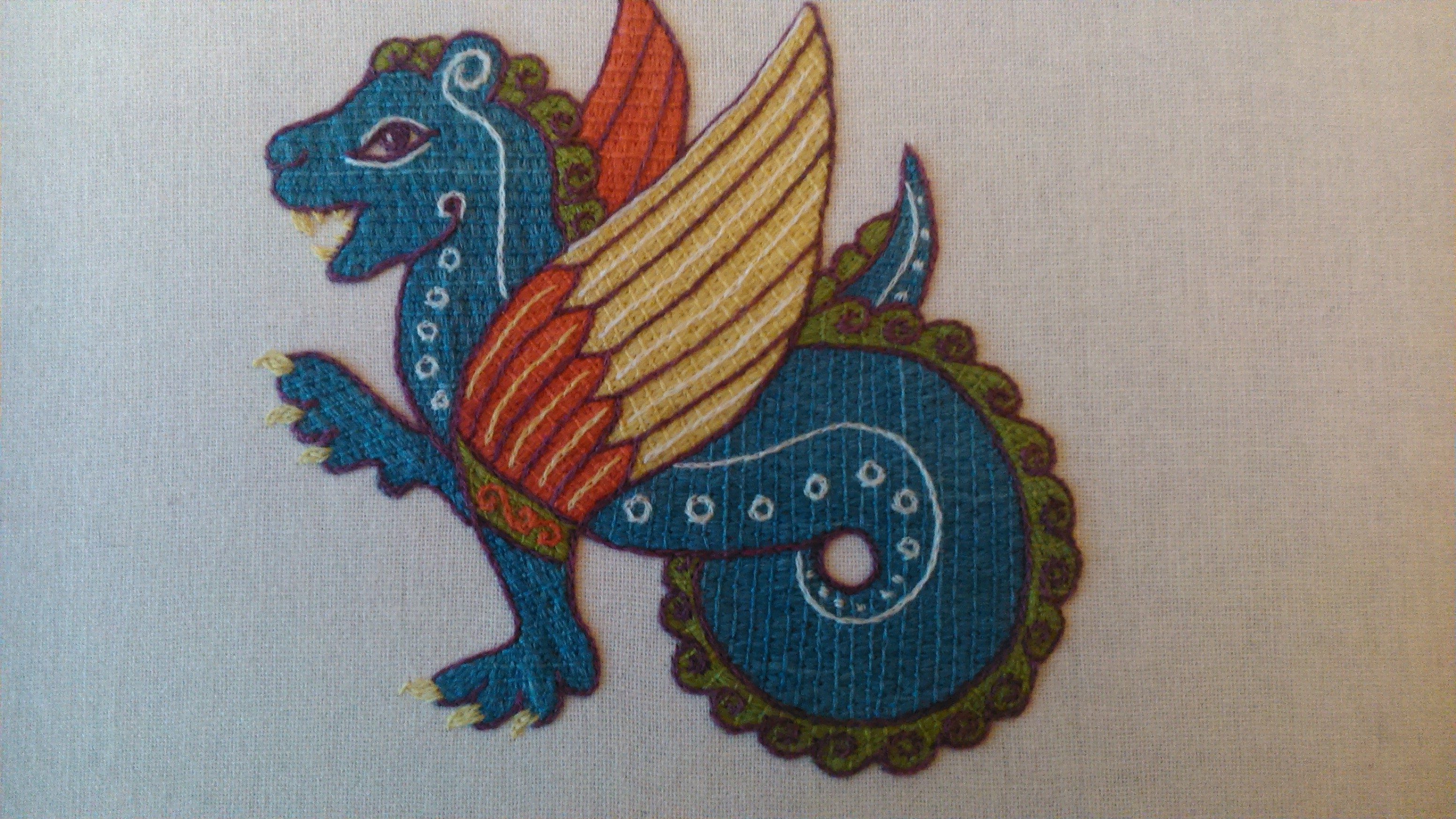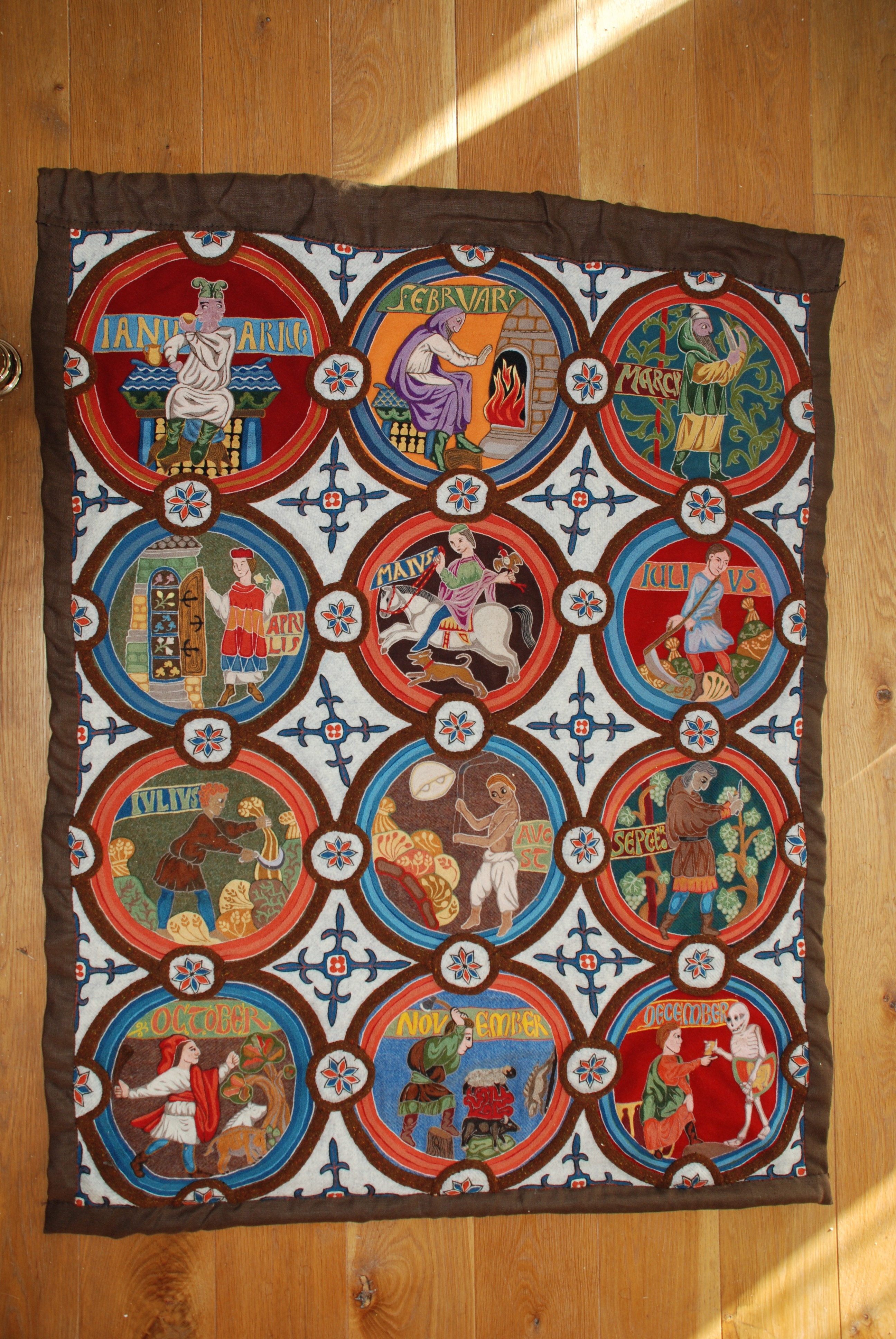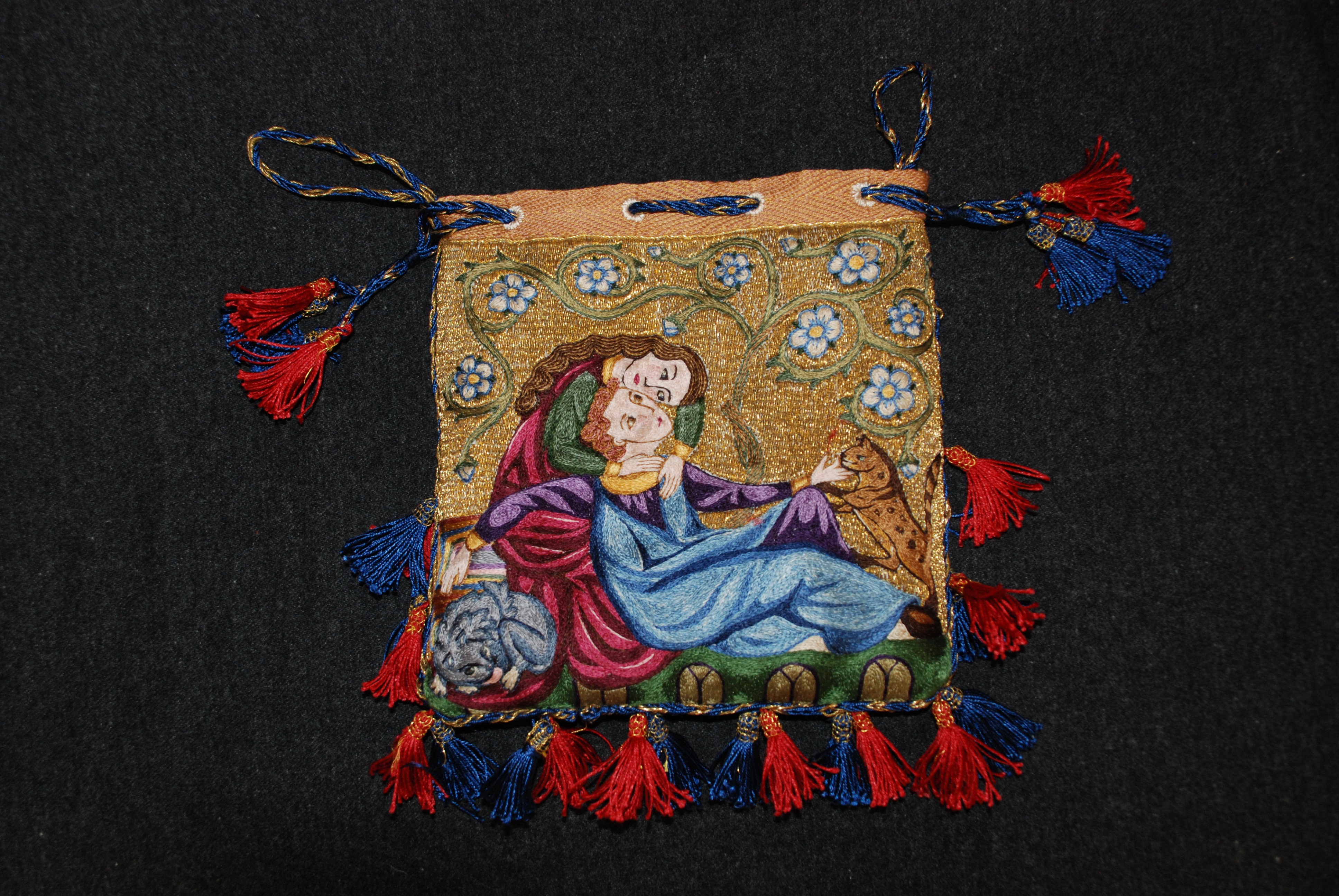Mounting on a board
This is basically what will happen if you take an embroidered piece to be professionally framed, but it’s pretty easy to do yourself at home.
I’m framing a larger piece, so I’m using hardboard, but for little things you can use artist’s mounting board. You need hardboard for bigger things because it won’t twist under tension (also it’s cheaper than mounting board).
In this case I’m going to cover the board with a layer of wool to pad it before putting the embroidery on.
I’ve cut (well ok, I got Gareth to cut) the board to size, and then cut a piece of cloth about three inches bigger on each side.
Next I’m going to put some drawing pins into the side to hold it into roughly the right place and stop it sliding around whilst I sew. In this case I’m only pinning the side I plan to sew.
Next you need some sturdy thread. Linen is good, or Dmc perle 5 is very strong. You need a lot of thread. I mean a LOT – two or three metres.
Then just sew round as though you’re lacing a corset. Don’t sew too close to the edge of the cloth, otherwise your thread might just break the edge, leave half an inch or so (depending on what type of cloth it is) to give it some structural integrity.
However, Even if you think you’ve laced it quite firmly, it still won’t be tight enough at this stage. So you must start at the beginning and individually pull each stitch tight – don’t yank it, just pull firmly and gently, if you yank on it even a good strong thread will break.
You can clearly see how much slack I’m taking up there, even quite close to the beginning. Don’t worry if you get some puckering on the first pass, as the change in tension when you do the other side will pull it out again.
Before you repeat the stitching on the other side, anchor again with pins – just in case the whole thing decides to slide. You will also want to trim the corners to reduce bulk. Trim less than you think at first, then sew, then maybe trim again.
Don’t worry about the corners not being 100% perfect, as the frame or mount will eventually obscure them anyway. Repeat stitching and tightening.
Once it’s stitched and the pins are removed you can trim the back of the fabric pretty brutally, but you might want to then just secure the corners with a couple of firm stiches to stop them moving – this is less important with a lightwieght fabric, but since I’m covering a layer of thick wool with a layer of thick silk velvet I’m being fairly brutal with it to reduce bulk.
You can see that the front is lovely and tight and flat against the board.
The front didn’t matter with the foundation layer, but because the velvet has the finished image on it, it’s worth taking time to faff about with the pins and make sure you have the image exactly where you want it before lacing as before. The advantage of the wool foundation layer is that not only does it stop the finished embrodiery from looking too flat, it also acts like fuzzy felt at this stage and stops the whole thing sliding around on the board.
At this stage pin all four side, instead of just the two you’ll sew first, and don’t worry if the overlapping fabric at the back isn’t quite square, it’s the front that matters.
It can be helpful if you have two different colours of thread to use them so that you can tell both sets of lacing apart




























This post has good timing. I’m almost finished with some embroidery I’m making for my niece, and the frame shop that had framed other bits I’ve done has closed because she retired. Other frame shops were way out of my budget.
if you do your own mounting there are some very good picture frmaes online – customised to your specifications, where you can get solid oak frames very cheaply, you just assemble it yourself
I hadn’t thought of using wool flannel as fuzzy felt to stop the top fabric sliding. Thank you for that idea!
In this case it was really more to add a thin layer of padding, but you’re welcome